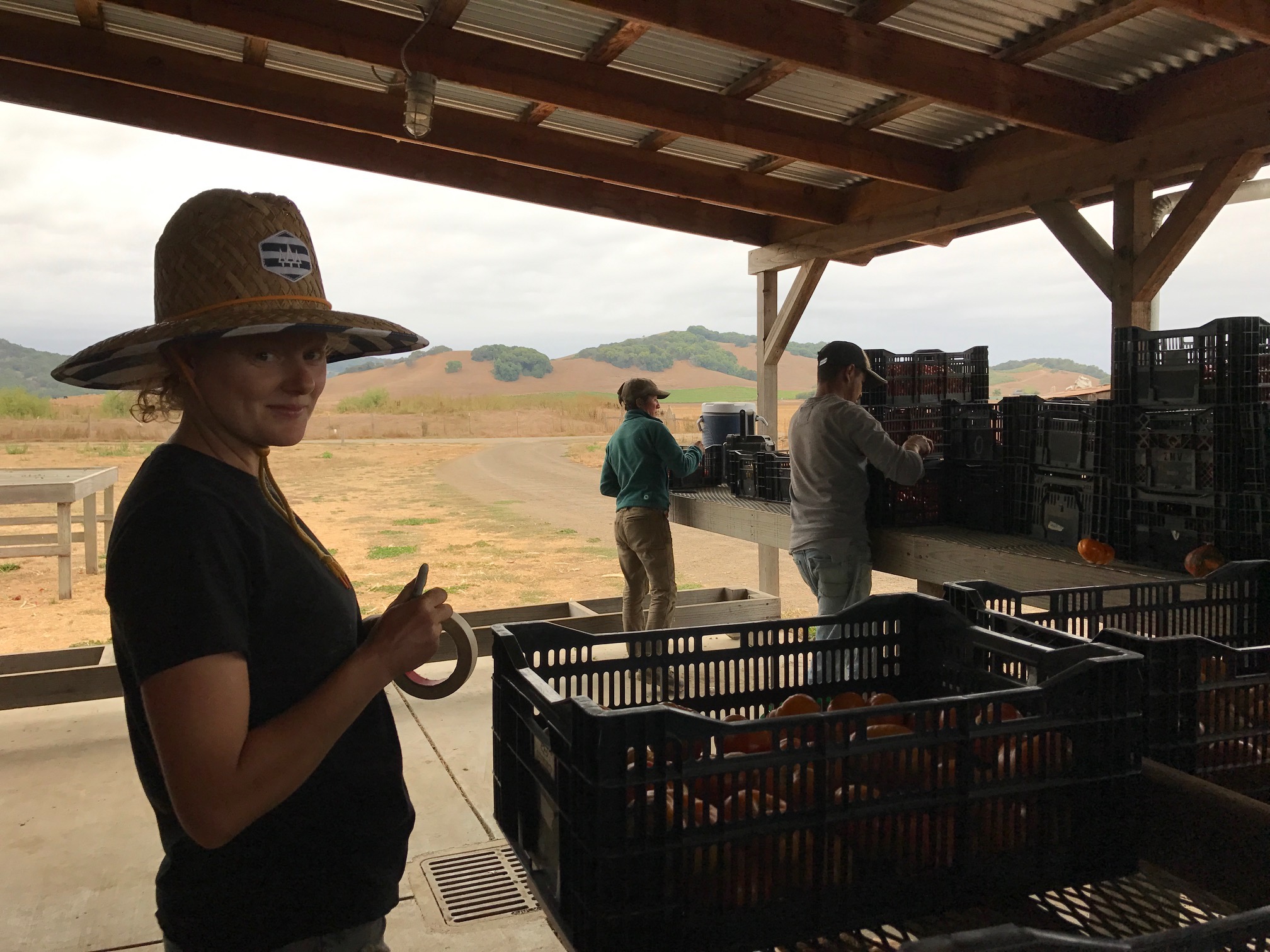To hear the rain outside is beautiful. It is a relief to know it has returned and signals a large shift on the farm. We seeded as much cover crop as we could before the rains and hope to get some in the soft soil as soon as it stops raining. The winter squash is safely in the barn. We will begin brining in all the other storage crops this week, continuing for the next 2 weeks as well.
The rain usually revives some crops and is the end of others. It is too soon to know how some of the summer crops will recover but we do hope to harvest tomatoes for 2 more weeks or so. We harvested them yesterday in anticipation of the rain. We will only offer the strawberries as you pick now, as we need to turn our attention to other crops.
Please put the following dates on your calendars:
Yoga in the barn Wednesday October 10th
Fall Harvest Festival Saturday November 3rd
This week's pick list:
Summer squash
Collards
Celery
Cucumber
Eggplant
Tomato
Hot peppers
Sweet peppers
Onions
Beets
Chard
Kohlrabi
Fennel
Melon
Leek
Carrots
Garlic
Spinach
Lettuce
Potatoes
Radish
Winter squash
Basil, Cilantro, Parsley, and Dill
Pick your own Strawberries and more…..
Revolution Bread is available.
Beth's Partially Fermented Salsa (eaten at the Fall Equinox potluck...)
You will need:
1/2 gallon glass mason jar
Non-iodized salt like sea salt
Food processor or blender
At least four days for the fermentation process for phase one.
Phase one:
Collect carrots and jalapeño peppers from your CSA haul (I like a combination of the white and green varieties). Resist the urge to wash them, as beneficial starter yeasts and bacteria from the farm will accelerate your at-home ferment. Big temperature fluctuations will damage lactobacillus (your fermentation bacteria), so be wary not to store your ferment in space that gets very cold or hot over the course of the day, or if the weather is on course to change dramatically outside. Thinly dice carrots and peppers in equal measure and stuff your jar just over half way full. Cover the vegetable with about two inches of water (distilled or well) and add enough non-iodized salt so that the liquid tastes like ocean water.The ferment needs oxogen, so cover with loosely woven cloth — or with a jar, I find an old sock works great. Leave your jar on the counter out of the sunlight and wait. After a day I like to pop on a lid and give the jar a good shaking — if things are going well the liquid will foam up start to smell sour. Taste the water to make sure the liquid leached from the veggies has not diluted the salt water — adjust the salt (add more) to maintain its ocean flavor. By day four I’m usually satisfied with the flavor of the ferment, but it won’t hurt things to go on for the course of the week.
Phase two:
Collect onion, tomato, cilantro, and garlic from CSA. The salsa will be 50/50 fresh to fermented ingredients — keep in mind that you can refrigerate the carrots and peppers to stall the ferment and make small batches of fresh salsa for up to a month with your weekly tomato rations. Scoop a percentage of carrots and peppers from your finished ferment and process in either a blender or food processor. Dice up your favorite tomatoes with your preferred amount of fresh garlic, onion, and cilantro, and blend with the ferment. Now eat!
Bonus eats:
The spicy sour fermentation liquid left over in your jar makes rad salad dressing or extra special Bloody Mary mix.



